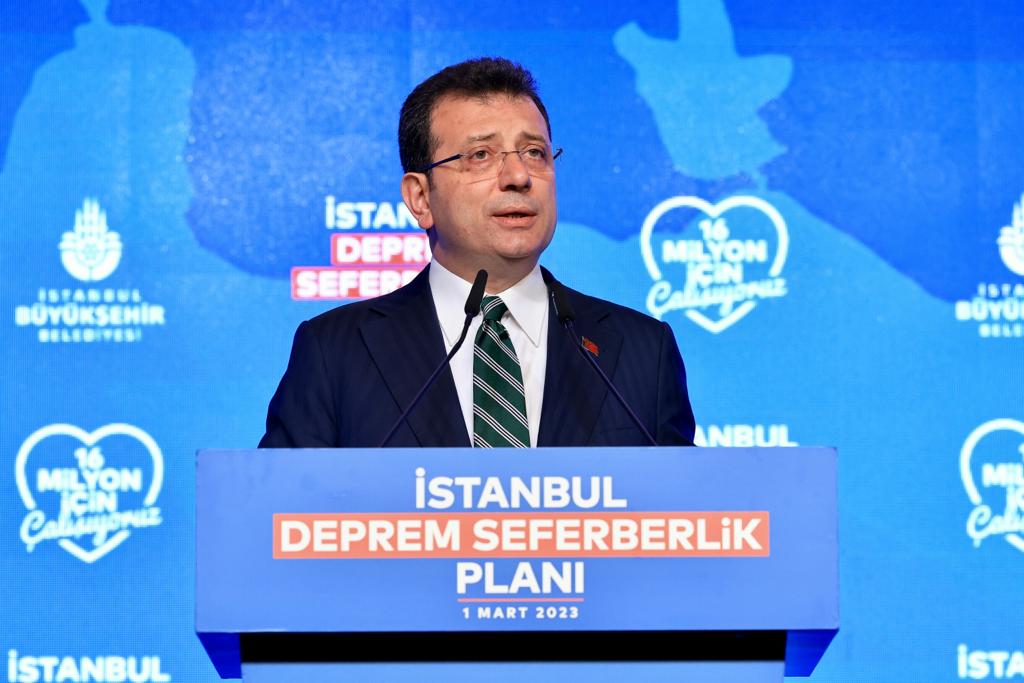İstanbul Mayor Ekrem İmamoğlu has unveiled a 10-article plan to make İstanbul, Turkey’s most densely populated city, resilient to potential disasters by 2050, the Birgün daily reported.
Situated near the North Anatolian Fault, İstanbul is vulnerable to earthquakes, with more than 200,000 residential buildings at risk of collapsing in the event of a major earthquake.
Speaking at the presentation of the “İstanbul Resistant to Disasters” project, İmamoğlu said the municipality’s goal is to reinforce 50,000 residential buildings in the city, starting with the transformation of the initial 22,000 homes between 2024 and 2029.
Bizim projelerimizin tamamı halkçı, adil, herkesi kapsayan, şehrimizi dönüştürecek ve ileri taşıyacak projelerdir. Afetlere Dayanıklı İstanbul temalı sunumumuzu dikkatinize sunuyorum. https://t.co/tPX3bSSDQM
— Ekrem İmamoğlu (@ekrem_imamoglu) February 7, 2024
The mayor said that during the urban transformation, the municipality will provide TL 7,000 ($228) in rental support in addition to the Ministry of Environment, Urbanization and Climate Change’s TL 5,500 ($179) assistance for buildings at risk. If a low-income person occupies a structure at risk, the municipality’s additional rental support will be TL 9,000 ($294).
İmamoğlu further said the municipality would provide disaster awareness training to 250,000 İstanbul residents annually, implement a project regarding early warning and emergency response and build an emergency rescue ship.
According to a report by the Gazete Duvar news website on Wednesday, Naci Görür, an earthquake expert with Turkey’s Academy of Sciences, said İmamoğlu’s project is in line with a seismic-resistant template for İstanbul.
İmamoğlu, from the main opposition Republican People’s Party (CHP), is seeking re-election in the March 31 local election.
İstanbul had been under the governance of the Justice and Development Party (AKP) for years. The AKP is accused of having destroyed much of the the city’s green areas, allowing high-rise buildings and shoddy construction in the city despite the risk of a potential earthquake.
Meanwhile, Professor Haluk Özener, director of the İstanbul-based Kandilli Observatory, said during a press conference on the anniversary of the February 6 earthquakes last year that an earthquake with a magnitude of 7 or higher in the Marmara region is not a distant possibility.
“We don’t have another 100 years. We might face this earthquake in the next 10 seconds or maybe in 20 years. I don’t think it’s accurate to tie this to time. … Don’t ruin yourself thinking an earthquake will happen tomorrow, but be as prepared as possible,” Özener said.
A 7.6-magnitude earthquake with an epicenter in İzmit, some 100 kilometers east of İstanbul, killed more than 17,000 people in 1999.
The number of İstanbulites has roughly doubled since then, to 16 million people.
In the event of a major earthquake in the Marmara region, not only will İstanbul be affected, but also nearby cities and industrial zones. Experts express concern about potential secondary disasters, such as fires and chemical leaks, which could exacerbate the impact of an earthquake.


